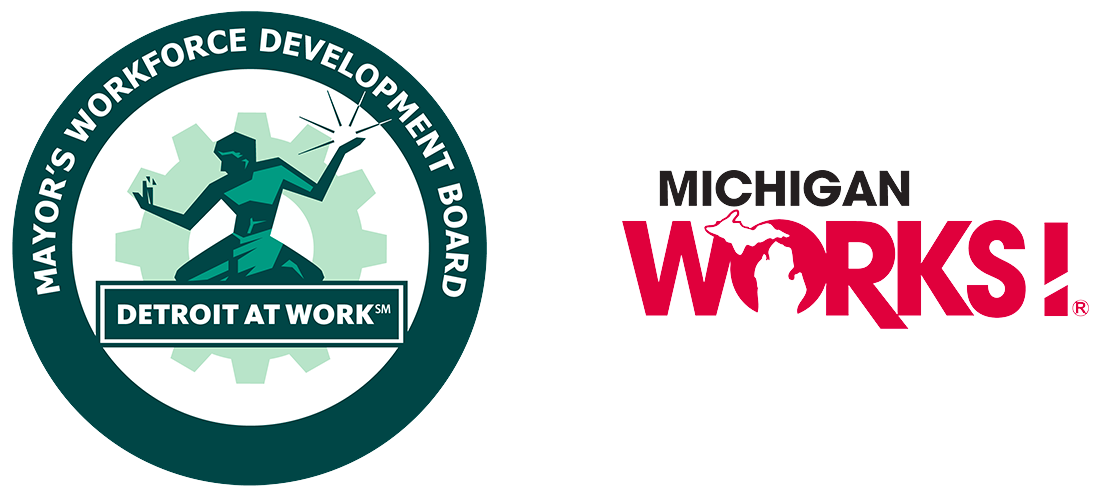City officials, business execs work to breathe life into Randolph High
The basic construction skills Tony McLean learned at Detroit’s Randolph Technical High School in the mid-1980s set in motion a career that included working on building Ford Field, Detroit Metro’s airport terminals and homes in New Orleans after Hurricane Katrina.
When McLean attended Randolph, the vocational school on the city’s northwest side was filled to capacity with 700 students interested in pursuing careers in the skilled trades.
Today, McLean is a carpentry teacher at Randolph, which now has fewer than 150 students amid a growing shortage of carpenters, electricians, plumbers and masons in Southeast Michigan.
“The reason I’m here is because of this school,” he said.
The undercapacity of Randolph and the building’s outdated equipment has caught the attention of Mayor Mike Duggan’s administration and his Workforce Development Board, a panel comprised primarily of Detroit’s top C-suite executives.
Now they’re trying to breathe new life into the school, raising more than half of a $6 million goal toward buying new equipment for classrooms and making capital improvements to the building that the cash-strapped Detroit Public Schools Community District cannot afford.
It’s part of a larger effort the reconstituted Workforce Development Board has been quietly pursuing for the past two years to tackle systemic problems in Detroit’s education and talent-development pipeline.
Those efforts include the new Detroit at Work initiative connecting job seekers and employers, the creation of new training programs for jobs in information technology and patient attendant care at city hospitals and a focus on training imprisoned Detroiters for jobs in culinary arts and heavy equipment operating before they re-enter society.
At Randolph, “the building is dated, the equipment is old and they don’t even have the dollars they need for supplies,” said David Meador, vice chairman and chief administrative officer of DTE Energy Co., who has taken a keen interest in rescuing the school. “In the construction management class, they can’t get new wood, so they build things and they have to take them apart and straighten the nails out and do it again.”
City officials and business leaders are trying to convert Randolph school into a dual training facility for Detroit high school students during the day and adults at night through federally funded job-training programs.
The city’s labor statistics paint a sobering picture of the board’s complex challenge: Detroiters held just 26 percent of the city’s 258,807 jobs in 2014 — a figure that’s lopsided compared to most major American cities.
Total employment among Detroit residents ages 16-64 was 49 percent, a share of the population that trails peer cities and lagged far behind the 67 percent of all Michigan workers in that age bracket who were employed in 2015, according to federal Bureau of Labor Statistics data.
“This is a Detroit focus, and our sense is if we don’t intervene, we’ll have a generation of adults that never work … (and) we’re not going to re-establish the middle class in Detroit,” said Meador, who co-chairs the mayor’s Workforce Development Board with Strategic Staffing Solutions Inc. CEO Cindy Pasky.
Another route
In the case of Randolph, the business and city leaders are bypassing the normal political routes of turning around a public school that is seen as a critical training ground for skilled trades apprenticeship programs.
Instead of beating the drum for a career technical education millage to pay for the improvements, the CEOs are passing the hat for the capital expenses and an on-going $100,000 annual operating subsidy.
“$6 million isn’t a small number,” Pasky said. “But so much of it is a one-time expense to have the right equipment, the right teachers.”
And rather than putting public pressure on Detroit’s school leaders to focus on reversing the school’s downward decline, the Workforce Development Board and the mayor’s staff are attempting to do it themselves.
“We have the facilities that are given to us, and we just have to put the right structure in place,” said Jeff Donofrio, executive director of workforce development for Duggan.
The Workforce Development Board entered into a 10-year agreement with Detroit schools last year to make improvements to the school, make changes to the curriculum and promote its programs for juniors and seniors to underclassmen in high schools across the city.
“There hasn’t been a strong message about the value of the school,” said Nicole Stallings, deputy director of workforce development for Duggan’s office. “We want to get to a place where we’re driving interest in the trades and how lucrative of a career that can be.”
Detroit Employment Solutions Corp., the city’s workforce agency, is in the process of hiring a firm to run night classes for adults at the school to train them for a variety of industry certificates, Donofrio said.
City officials also are coordinating improvements to the school facilities this summer, including interior painting and modernizing the building’s entrance.
“It hadn’t fallen into disrepair, but there isn’t the feeling of a modern, clean construction site,” Stallings said during a recent tour of the building.
The mayor’s 37-member Workforce Development Board includes six members from the leadership ranks of labor unions who also are involved in resuscitating Randolph.
The International Brotherhood of Electrical Workers is working with workforce development officials to restart an electrical program that was axed a few years ago.
“That one we weren’t able to keep because we just couldn’t find a teacher for the program,” said Brenda Belcher, a school district administrator who oversees 29 city schools, including Randolph.
City officials are working with the school district and teachers union on a plan to pay instructors at the school more than the district’s collective bargaining agreement requires in an effort to attract quality educators, Donofrio said.
Barebones budget
As a career and technical education school, Randolph serves students from four traditional high schools in the city. The school is split in two: a 94-student traditional high school and 140 students in career and technical education, Belcher said.
Randolph’s student population took a hit in 2013 after the Education Achievement Authority took over six DPS high schools in a school reform effort that has since fizzled out.
The EAA would have lost state funding if its high school students had attended Randolph for half of the day.
“When they split DPS up, (Randolph’s enrollment) declined, and the EAA wouldn’t send us any students,” said McLean, the school’s carpentry teacher. “That’s crazy.”
The EAA high schools are rejoining the Detroit school district in July and Randolph school’s boosters are hoping to see an enrollment increase this fall.
McLean said the school’s barebones budget has limited learning opportunities in his class. His students learn the basics of framing by building a house inside a classroom workshop — and then tear it apart.
“We could take them to a different level, but they need to give us more resources,” McLean said.
The juniors in McLean’s class ended this school year by building a tiny house in the front lawn of the school at West McNichols Road and Hubbell Avenue.
“The girls are starting to excel beyond the boys,” McLean said of his 28 students this year.
Jamea Delaine, 16, said she likes framing walls more than anything else she’s learned this year in McLean’s construction class.
“That’s more my territory,” Delaine said. “Don’t knock it until you try it.”
Read the original article here.



